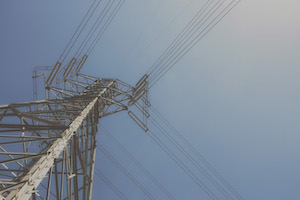Identifying conifers heightens awareness of their beauty
Conifers are woody plants that have needle-like leaves and bear cones. Commonly referred to as “evergreens,” most remain green year-round, losing their needles slowly and only a few at a time.
One exception is the American larch (Larix laricina), a deciduous conifer that loses all its needles in the fall, similar to maples and oaks.
Conifer cones house the seeds of the trees and are commonly called “pine cones.” Each cone is comprised of overlapping scales that protect the seeds until it is time for the mature seeds to be dispersed.
The mechanism for seed dispersal is varied among species and may require wind, water, animals or even fire. Most conifers have a distinctive pyramidal shape, wider at the base and narrower at the top. This adaptation allows conifers to more easily shed heavy layers of snow that could otherwise break branches.
Examining conifers’ cones and physical characteristics allows us to identify the tree whether for purchasing for our own home landscape or for observing them while hiking in the woods or neighborhoods.
Some of the more common groups of conifers found in western Pennsylvania include the eastern hemlock (Tsuga canadensis), pines (Pinus spp.), spruces (Picea spp.), and firs (Abies spp.).
The eastern hemlock is designated as the state tree of Pennsylvania because of its connection to Pennsylvania history. Characteristics of eastern hemlock trees make them easy to distinguish from other conifers. Their needles are short and flat with two thin white lines on the underside. Each needle is attached separately to the branches.
Eastern hemlock cones are small (0.4 inches). Many cones hang from each branch. Eastern hemlocks are slow growing, reaching maturity at about 250 years and living to 800 years or more. However, our hemlocks are affected by an insect: the non-native, invasive hemlock woolly adelgid (Adelges tsugae). This insect is causing the decline and death of hemlock trees throughout Pennsylvania.
Pines as a group include a wide variety of species of which several are commonly found in western Pennsylvania. The most notable characteristic of pine trees are their needles. They are relatively long, thin, flexible, soft to the touch, and uniform in color. Needles of pines are attached in clusters (called fascicles) of two, three or five needles along the branch. Identification of species can be determined by counting the number of needles in a cluster.
Pine cones vary in size but are most often wide and have large, hard scales. Perhaps the best known and easiest to identify is the eastern white pine (Pinus strobus). It is a fast-growing pine and the tallest pine species in eastern North America. Its branches grow in a circle around the trunk. White pine is identified by five long, thin 3- to 5-inch needles in each cluster. Another common pine in western Pennsylvania is the red pine (Pinus resinosa), whose 4- to 6-inch needles are in clusters of two.
Spruce trees can be distinguished by short (1-inch), sharp, brittle needles that are square in shape and spiral on the branch. The needles are painful to grab tightly. The color of each needle is distributed uniformly.
Spruce cones are long, thin and covered in narrow, flexible scales that allow the cone to bend.
In western Pennsylvania, the most common spruce trees include the introduced Norway spruce (Picea abies) and the native red spruce (Picea rubens). The Norway spruce originated in Europe and has naturalized in Pennsylvania. It is fast growing with branches that hang downward, giving the tree a “weeping” character.
Native to Pennsylvania, the red spruce is slower growing with smaller cones and shorter needles than the Norway spruce. It has strong horizontal branches.
Firs are another group of conifers found locally. Fir trees are slow-growing and have short, flat, soft needles with an underside characterized by two white lines along the length of the needle. The needles are attached individually on the branch and curve upwards toward the top of the branch. They are not painful to grasp.
Fir cones are small and grow upright from the branches. The aromatic balsam fir (Abies balsamea) is best known as the choice for Christmas trees. It is commercially grown in Butler County.
Conifers make an important contribution to the landscape by providing shelter and food for birds and wildlife. Aesthetically, they brighten a colorless winter landscape.
Enjoy observing conifers this winter by taking a walk and examining the ones you find. Use your smart phone or camera to photograph the trees. Examine the cones attached to or scattered underneath the tree. Hone your identification skills by researching the conifers you photographed.
While out, collect a few cones for winter decorating. Select cones based on their size, shape, and interest to you. Display them in a decorative bowl. Leave them natural or paint them. Larger cones with stiff scales are great for making bird feeders by rolling first in peanut butter and then in bird seed. Involve the whole family and hang the completed feeders outside near a window.
To learn more about conifers, explore Penn State Extension’s online, in-depth educational program, Plant Identification and Usage: Coniferous Trees (https://extension.psu.edu/plant-identification-and-usage-coniferous-trees). If you have questions about conifers, call the Butler County Master Gardener Garden Hotline at 724-287-4761, ext. 7, or email the Master Gardeners at butlermg@psu.edu.
Cynthia Michelini is a Penn State Extension Butler County Master Gardener.












